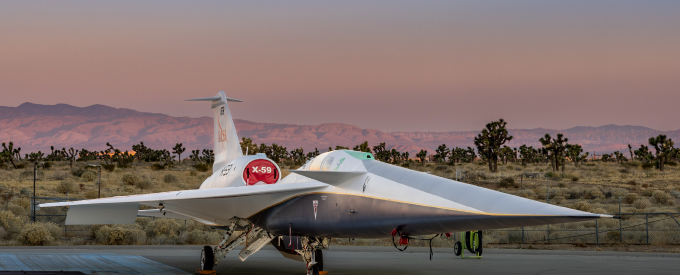2024-02-01
From Thunder to Thump: X-59 Tames Supersonic Noise
The quest to silence supersonic flight just took a giant leap forward as Lockheed Martin Skunk Works unveiled the X-59, a revolutionary experimental aircraft designed to muffle the ear-splitting sonic boom.
The ceremony in Palmdale, California, marks the culmination of decades of collaboration between Lockheed Martin and National Aeronautics and Space Administration (NASA), finally cracking one of the aviation industry’s most enduring challenges.
Rollout ceremonies are a long-standing aviation tradition, and in the case of the X-59, it celebrated technical advancements, teamwork and innovation that stemmed from years of research, development and production of a one-of-a-kind technology demonstrator aircraft that will reduce the loudness of sonic booms to a gentle thump.
Transformational Impacts
“We’re thrilled to take on this challenge alongside NASA, whose quiet supersonic technology mission will have lasting, transformational impacts for people around the world,” said John Clark, vice president and general manager, Lockheed Martin Skunk Works. “This project is just one example of the broader ingenuity of our industry as we continually strive to push the envelope of what’s possible.”
“The entire X-59 team leaned into the expertise of both legendary organisations, NASA and Lockheed Martin, to ensure success for this program. I am proud of everyone who made this historic moment possible,” stated Greg Ulmer, executive vice president, Lockheed Martin Aeronautics.
The demonstrator aims to gather statistically valid data over populated areas, aiding U.S. and international regulators in approving new rules. The goal is to pave the way for quiet commercial supersonic flight over land.
Tailored Design
While the X-59 is an experimental supersonic aircraft shaped to reduce the loudness of a sonic boom reaching the ground to that of a gentle thump, it accomplishes this by a tailored design that separates the shock waves that produce sonic booms, making them quieter.
The resulting supersonic “heartbeat” is dramatically quieter than the disruptive N-wave boom generated by today’s supersonic aircraft.


No Comments